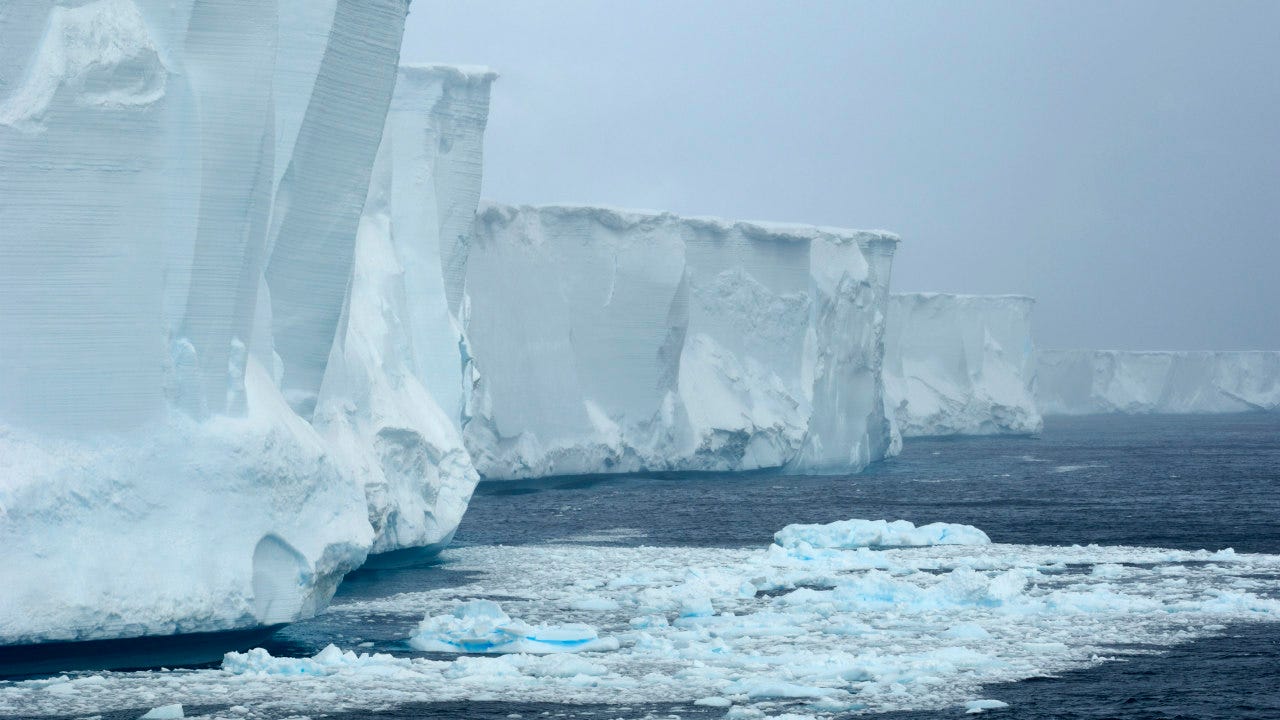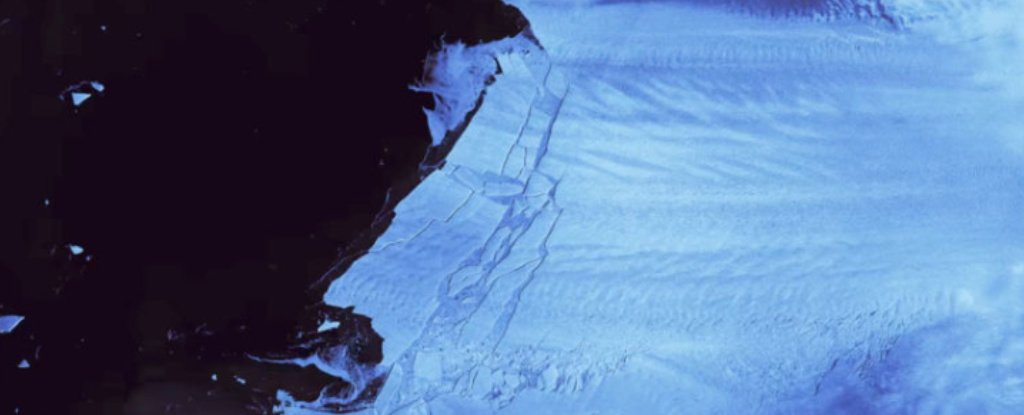

The two glaciers contain enough ice water to raise sea levels worldwide by a startling four feet, according to NASA. Together, the melting of PIG and Thwaites pose a real threat to rising sea levels. The largest iceberg ever recorded was named B-15, and broke off from Ross Ice Shelf of Antarctica in March 2000 measuring a massive 4,247 square miles, about the same size as the island of Jamaica. The first estimate of Antarctic calving has found that since 1997 ice shelves have lost as much ice from calving as from melting. Palmer became the first ship to sail across the 75-mile face of West Antarctica’s Thwaites Glacier, a piece of its floating ice shelf bigger than Manhattan crumbled off the glacier into a flotilla of icebergs. By 16 April 2021, no significant fragments remained. Iceberg A-68 was a giant tabular iceberg adrift in the South Atlantic, having calved from Antarcticas Larsen C ice shelf in July 2017. “What is unsettling is that the daily data stream reveals the dramatic pace at which climate is redefining the face of Antarctica.” The 200-foot-tall (60-meter-tall) front of the Getz Ice Shelf in Antarctica is scored with cracks where icebergs are likely to break off, or calve, in this 2016 photo. Iceberg A-68 on 20 July 2017 The drift of Iceberg A-68A from to 26 August 2018. “The Copernicus twin Sentinel-1 all-weather satellites have established a porthole through which the public can watch events like this unfold in remote regions around the world,” Mark Drinkwater, head of the Earth and Mission Sciences Division at ESA, said in a statement. How the Pine Island Glacier affects sea levels: The time-lapse video reveals just how quickly the iceberg slid off, before it was completely set loose from the glacier. Although it is rather remote, PIG and its twin glacier, Thwaites, are one of the main pathways where ice enters the Amundsen Sea from the West Antarctic Ice Sheet.

The Pine Island Glacier is located around 1,600 miles from the tip of South America. It is just the latest calving event for this rapidly shrinking glacier. Before collapse, ice shelves first undergo a. Massive Iceberg Breaks Off in Antarctica but Experts Say It Wasnt Due to Climate Change. Antarctic volcanoes: West Antarctic ice sheet collapse likely unstoppable.Subscribe.
ANTARCTICA ICEBERG BREAKS OFF 2019 EFFECTS CRACK
The melting of Antarcticas ice sheet is currently responsible for 20-25 of global sea level rise. 130-km-long crack might cause Antarctic Larsen C ice shelf to break off.

There are two primary causes of global mean sea level rise added water from melting ice sheets and glaciers, and the expansion of sea water as it warms.
ANTARCTICA ICEBERG BREAKS OFF 2019 EFFECTS FREE
The iceberg, which has an area of 300 square kilometers, broke free from the glacier at some point over the weekend, on February 8 or February 9. When certain thresholds are passed, catastrophic ice shelf disintegration through iceberg calving is initiated. Antarcticas Effect on Sea Level Rise in Coming Centuries.


 0 kommentar(er)
0 kommentar(er)
